#Alberto Beddini
Explore tagged Tumblr posts
Photo
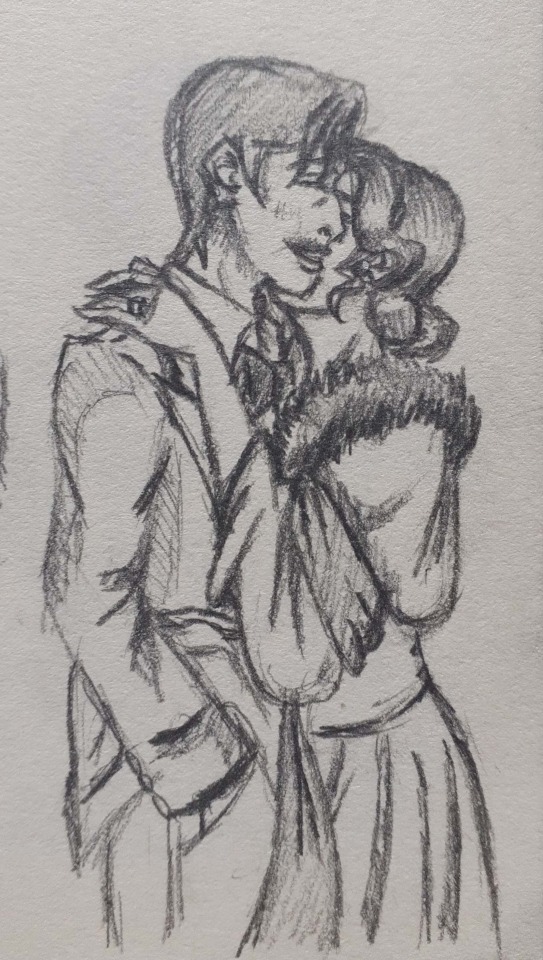
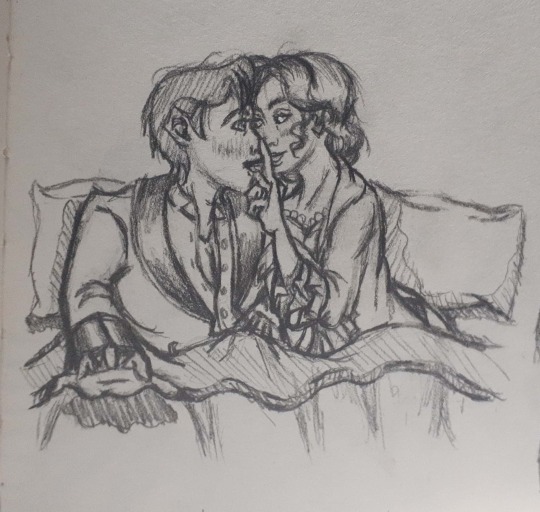
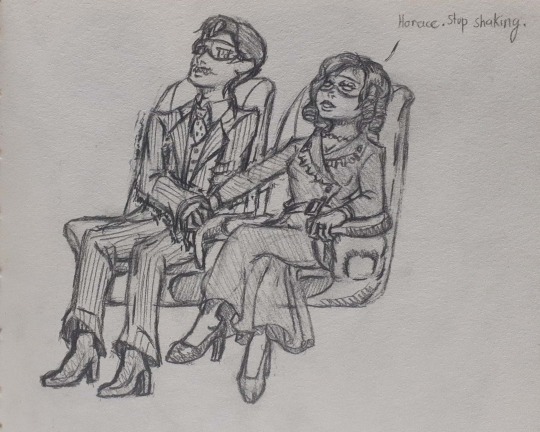
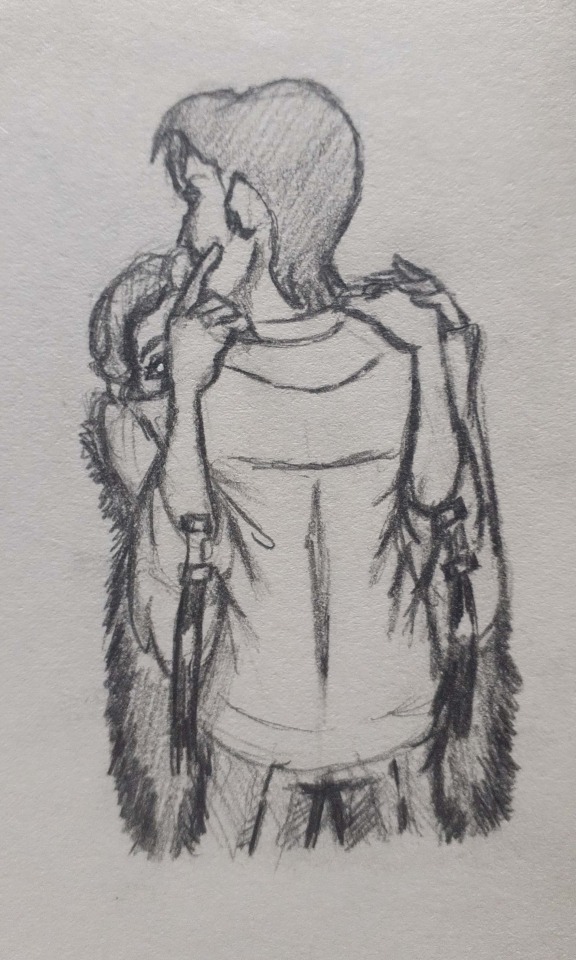
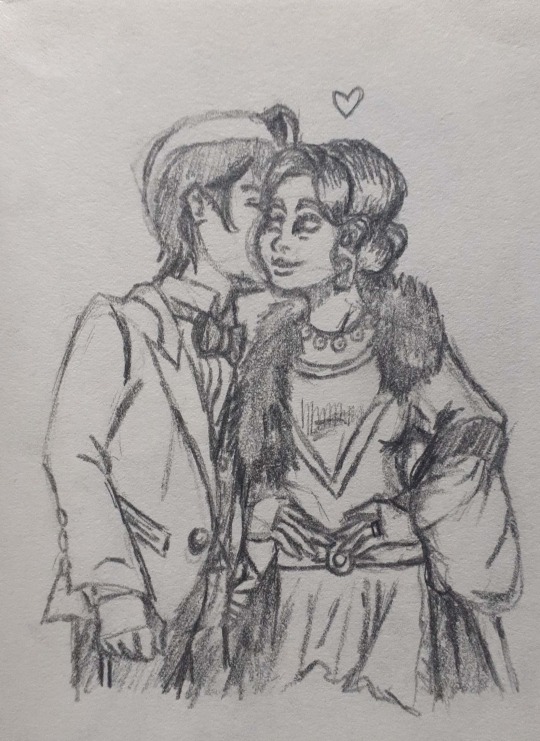
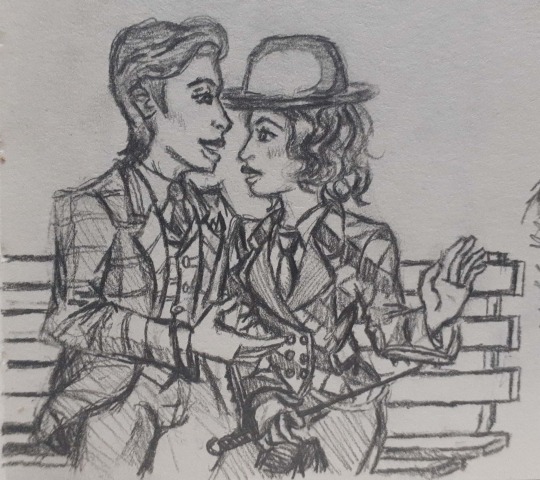

Did Some Top Hat Sketches! Tho it was more Horace x Madge tbh (Oto K TT^TT) Idk why but Maiti and Oto K made their relationship a lot cuter than the 2015 version. Also, Beddini ❤️
#takarazuka revue#takarazuka#top hat#tophat#minami maito#oto kurisu#yuzuka rei#hoshikaze madoka#hozumi mahiro#hanagumi#sketch#horace hardwick#madge hardwick#Alberto Beddini#jerry travers#dale tremont#Horace and Madge just kissing each others cheeks through out the show counter when#Jerry & Dale just got engaged and the it's two anniversary#They ended up sharing rooms and stuff happens so...lets keep it PG#Seeing Horace freak out with Jerry in a Plane made me wonder what if its Madge#Could be the reason these two don't fly together now that i think about it HAHAHA#I squeezed ReiMado somewhere there#Alberto in this play is for some reason is almost my..ideal man...i mean i like how he dresses and is a designer...soooo#Proceeds to dump in tumblr ikr#wait up im doing horace in a showercap art
4 notes
·
View notes
Text
I stan Alberto from Top Hat (1935)
2 notes
·
View notes
Photo






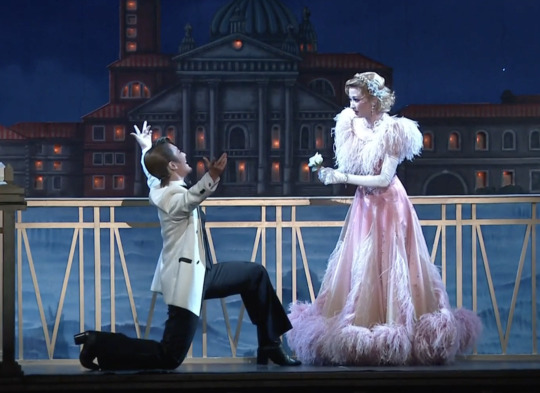
hozumi mahiro as alberto beddini
“oh angelo mio!” – alberto beddini to dale tremont (hoshikaze madoka)
10 notes
·
View notes
Text
Astaire & Rogers Rewatch Part 4: Top Hat
• So we’ve reached Top Hat, which is generally everyone’s favorite including @elloette. Even many film historians say it’s the best Astaire/Rogers film. And it’s definitely one of the best but not the best imo. It does however have some of my favorite dances and songs and probably the most famous dance Astaire and Rogers ever created.
• Top Hat is kind of like a more sophisticated version of Gay Divorcee. It also has probably the best example of the Big White Set that was ubiquitous to these films. If I’m not mistaken they dyed the water black to make the set stand out more *goes to check IMDB* yep!
• Our characters/actors: Jerry Travers (Fred Astaire), Dale Tremont (Ginger Rogers), Horace Hardwick (Edward Everett Horton), Madge Hardwick (Helen Broderick), Alberto Beddini (Erik Rhodes)
• I never realized it before but Horace and his valet are like a bickering old couple. In many ways, they make far more sense as a pair than Horace and Madge.
• I’m back again to gush about Astaire’s singing. He slides effortlessly into “No Strings (I’m Fancy Free)” straight from the dialogue, and it sounds perfectly natural. Like the way hb and I integrate Parks and Rec quotes into everyday dialogue, but obviously Astaire is a bit fancier.
• His line about feeling like a sailor at sea is fitting since, in his next film, he will indeed be a sailor.
• This is a favorite solo routine for sure. He’s just so joyful and in the groove. I especially like when he taps out the beat on the side table and startles Horace with short burst of taps.

• Horace thinks he’s such hot shit that some random young woman has come to see him at his hotel late at night.
• Astaire didn’t think he was handsome and didn’t enjoy watching himself on screen, hence the grimace when he looks in the mirror, which is played for a laugh. But that opinion runs contrary to Astaire’s place as one of the leading men of Hollywood and as one part of some of the most romantic moments in film history, primarily with Rogers. It lends credence to Katharine Hepburn’s famous saying that Astaire gave Rogers “class,” and she gave him “sex” (metaphorically). He’s arguably never sexier than when dancing with Ginger Rogers.
• When Dale comes upstairs to tell him to shut up, she gives zero effs. Doesn’t care that he’s trying to be charming or funny, or that he’s sorry for waking her, or that he’s flirting with her, doesn’t care about him at all in any way. Just shut up so I can sleep, is her message.
• But then. She is charmed by his soft shoe dance on a sandy floor to lull her to sleep.
• Spotted: young Lucille Ball as the florist’s assistant. We’ll see her in the next movie too where she’ll have her first ever credited roll.
• Astaire’s face when he asks, “Don’t I even get any thanks?” is so heartfelt and open. It always makes me awwwwwwww.
• Another favorite line of dialogue from these films:
Jerry, holding an umbrella in a downpour: “May I rescue you?”
Dale, unimpressed: “No, thank you. I prefer being in distress.”
• “Isn’t it a Lovely Day?” is a flirtatious song and they act it that way but the true flirting comes in the dance, which is about partnership and equality. They imitate one another throughout the scene, starting even while Astaire is singing. Rogers puts a hand on her chest and he then does the same. They’re dressed alike as well, thanks to her riding outfit, and that furthers the theme by making her more masculine to match him but it’s also advantageous for some of the moves they’ll perform, such as when she lifts him.
• Jerry thinks he’s in control. He’s surprised, but pleased, to find Dale has gotten up and followed him as he begins to dance. He thinks he’s won her over. Then she mocks him a bit by sticking her hands in her pockets like he’s done and surprises him even more by busting out her own little extra tap. She’s telling him she’s not there just to follow his lead and any relationship between them will only work if they’re equals.
• They’re definitely testing each other in this dance, finding out if they are drift compatible. Trying this step and that to see if the other can keep up. She keeps glancing at him in a self-satisfied way. He crosses his arms to see if she’ll do the same. They circle the space mirroring each other with every movement, and while they’re in sync, it’s still like one is leading and the other is following. Until they clap in unison, skip forward, and land at the exact same time. They spin around neatly and he glances over, smiling in pleasure, and so is she.
• The first time they touch is over a minute and a half in and it’s only to lend a hand so each can twirl in turn. They glide forward and back in a wide loop as the music builds and now they’re smiling in earnest and it’s not just the characters; it’s Astaire and Rogers. He mouths something to her, maybe more than once, and they’re both clearly enjoying themselves.
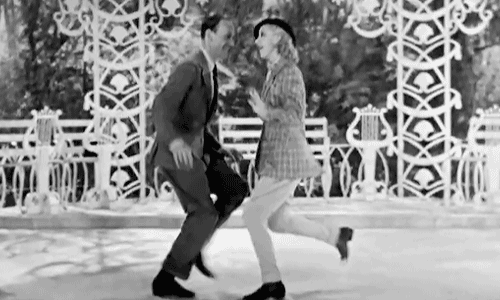
• It’s only in the last 30 seconds or so that they actually touch for real, and it’s because she has crooked her arm in invitation. He spins them around the bandstand together and although it’s a fairly standard move Astaire uses a lot, because they’re both in trousers, you can see just how close they are to one another, knees and hips pressed together.
• And now they combine both elements of the dance: imitation and partnership. They move as reflections of one another and take turns lifting each other. During this portion is where you once again can see the acting stop and the actors just being themselves. As they near the end of the dance, Astaire and Rogers both grin in delight and he maybe looks especially proud of her. This was a technical dance with a lot of movement and she nails it. While her gowns often add to their duets, it’s routines like this, where she’s in trousers, that you can see her technical skill really shine.
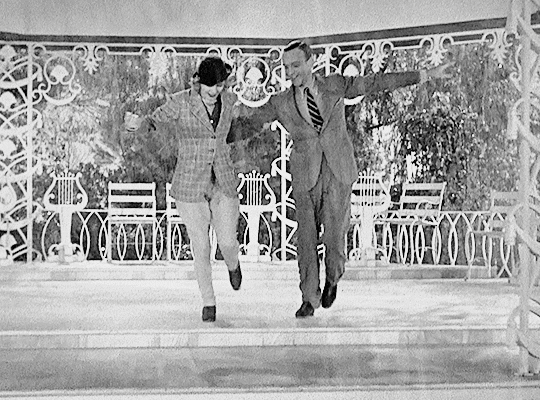
• One of the many ways Rogers contributed to the dancing partnership was in being their “button finder,” which means she was good at figuring out how to end a scene or dance. The best example is at the end of this dance, where she came up with the idea for them to finish by having Jerry and Dale simply shake hands.
• Don’t miss the sex joke in the middle of Horace and Jerry’s argument:
Horace, who is concerned about scandal ahead of Jerry’s show: “Why, I’d rather have had it (getting slapped) happen to me than to you.”
Jerry, not missing a beat: “Oh, of course, if you enjoy that sort of thing.”
Horace: “I do, immensely… (realizing what he’s just said) Now don’t be absurd!”
• Dale’s line, “I hate men. I hate you. I hate all men!” is a mood.
• Beddini’s response, “I am no man. I am Beddini!” is how all men think of themselves.
• Interesting that all we’ve seen Dale and Jerry do is dance a very fun, flirtatious, but not necessarily romantic duet (ok, fine it was in a bandstand while it was raining which is pretty romantic but you get it), and yet she says, “How could he have made love to me when he was married all the time?” 🤔🤔🤔
Further 🤔🤔🤔🤔🤔
Horace: “You sure you didn’t forget yourself in the park?
Jerry: “Positive. If I ever forgot myself with that girl, I’d remember.”
• Seriously, there are some vibes between Horace and his valet. *gaydar pings very quietly out of earshot of the censors*
• I like Astaire’s little warm-up in his dressing room. Seems like the kind of thing he probably did irl.
• One of my absolute favorites moments is when Jerry instructs Horace to charter a plane so they can fly down to meet Dale. Horace asks, “What kind of plane?” And Jerry, already about to miss his stage cue, leans back into the doorway quickly to say, “One with wiiiings!”
• The physical “invitation” Jerry uses when singing the appropriate line in “Top Hat, White Tie and Tails” is actually Madge’s telegram about Dale. He took it on stage with him after snatching it from Horace’s hands.
• There are conflicting stories about how many canes Astaire broke while filming this sequence and which take was used. One account says he broke 12 canes in frustration while failing to get the number absolutely right and the 13th (and last cane) was used in the final take, which was then printed. But Astaire recalled that Jimmy Cagney, who was visiting the set at the time, advised him that he’d nailed it on the second take. Astaire wanted to try a couple more but the next day, agreed that Cagney was right and the second take was used.
• Shooting down his rivals with a cane and using taps for bullets was based on a gimmick Astaire had used years before in a terrible Broadway show. Here it became one of his most iconic creations. I especially like when he fires off a shot at the Horace’s stuffy club members in the audience.
• How on earth did Dale think that Jerry was married to Madge? In what world are they compatible? Granted, she hasn’t actually met Horace but still.
• While Horace is in the bathtub in his shower cap:
Horace: “Jerry! I don’t think it’s safe for you to see that girl alone.”
Jerry: “Well, I don’t think it would be quite proper for you to receive her that way.”

• In most Astaire/Rogers movies, he has a lot of bravado and pursues her but she almost always ends up shocking the hell out of him when she turns out to also be ballsy af. In Gay Divorcee, she invited him to her room. In Top Hat, she comes up to see him alone and then kisses him.
Hardly a romantic kiss btw. But we still aren’t to the place where we talk about the lack of kisses in this film series.
• Aaaaaand again, Astaire’s singing is so perfect for this song. He leads straight from conversation into the lyrics. The music has already been playing in the background, and he makes it appear he’s created the lyrics of “Cheek to Cheek” just for her in this moment.
• Rogers does a magnificent job of softening when he starts to sing. Her eyes flick up and down his face, touched that he’s serenading her. And when Astaire drops his tone on the word “seek,” his gaze is heated for a just a moment and her lips quirk a little. Being sung to is awkward but she makes it seem like the most romantic thing.
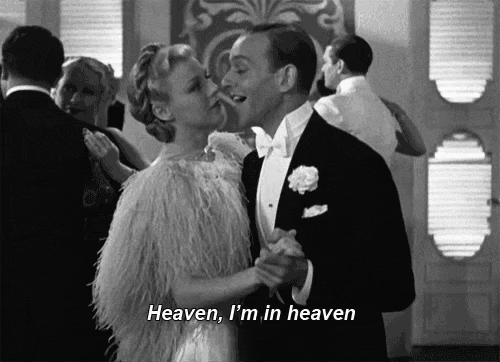
• Like in “Night in Day” in Gay Divorcee, this dance is about seduction but its more developed than in the prior film. Because the characters have already danced together, elements of “Isn’t it a Lovely Day?” seep in, such as the short tap routine they do side by side. Instead of getting her to simply give in to him, he is asking her to trust him, to remember the equality and partnership they’d built before. He almost never takes his eyes off her for the entire dance, even watching her out of the corner of his eye when they’re side by side.
• I would say most of this dance falls into the “acting” category but there are a couple Astaire and Rogers moments that peek through. After the first time he leans her back and them brings them together so their faces are close, he smiles privately to her. After their little tap section, he swings her back into his arms and they’re both smiling in delight.
• A few times the only place they’re touching is his hand on her back and there’s something very Victorian hot about that.
• I’ve always liked the moment where she twirls and he waits, hand outstretched, expression openly adoring, until she takes his hand without looking and they’re in sync again.
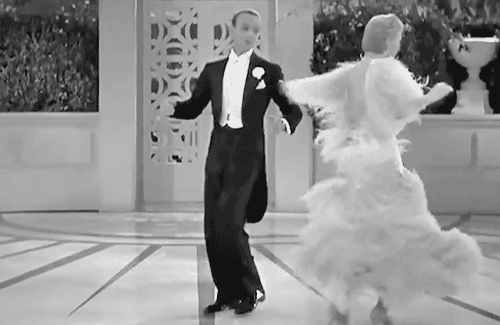
• Another callback to “Isn’t it a Lovely Day?”: In that dance, she crooked her arm in invitation to him. Here, she leaves her arm up so he can wrap it around his neck.
• Several times he leans her back, each time dipping her a little further and keeping her there a little longer, but never failing to hold her and bring her up. Each time showing her she can trust him. When they reach the climax, she bends back completely and he holds her for several looooong seconds before very slowly returning her to her feet. Complete surrender and trust from them both. And after that moment, there is no need for anything else to cement their relationship. He can simply bring them cheek to cheek.
• Something that is evident in most of his partnered dances but perhaps most obvious in a duet like this with Rogers is that Astaire was very good about making his partner the central focus. Your eyes instinctively watch Rogers, not him, throughout the performance. But credit must also be given to Rogers herself for commanding the screen so thoroughly not solely because of her elegant dancing and gorgeous gown but because she remembers to keep acting the entire time. We never doubt that Dale is falling in love with Jerry through this dance.

• Sooo the feather dress. So much to say, some of which you may already know:
The short story is, as soon as they started filming the dance, the feathers on the dress flew everywhere. No one wanted that dress to be used, except Ginger Rogers, and she refused to wear something else.
Director Mark Sandrich, who was a dick to Rogers all the time, wanted her to wear a gown from Gay Divorcee. She told him to GTFO. Then she called her badass mom who came to the set to also tell him to GTFO.
Because they could be little shits, Astaire and Hermes Pan made up lyrics mocking the dress, set to the tune of "Cheek to Cheek.” They went, "Feathers, I hate feathers, And I hate them so that I can hardly speak, And I never find the happiness I seek, With those chicken feathers dancing cheek to cheek."
Rogers was pissed, not in the least because she had designed the dress herself and also they were ostrich feathers tyvm. Tbh it does look pretty magnificent in the final edit of the film… but that was after every single feather had been hand sewn into place. And you can still see some of them float off.
In their next film, Astaire is going to get whacked in the face by the heavy, beaded sleeve of Rogers’ dress so he really had it easy here.
He also knew he’d gone too far in poking fun at her dress and generally being an ass about the entire situation. Astaire apologized to Rogers by giving her a gold feather for her charm bracelet and affectionately calling her “Feathers” in the accompanying note (“Dear Feathers, I love ya! -Fred”). The nickname stuck. Later, he would also give her a beautiful travel watch that was housed in a golden envelope. Engraved on the outside of the envelope in Astaire’s writing? “By Hand/To Feathers/All best love -Fred.”
• The dress is absolutely essential to the dreamy quality of this dance. It makes her look like she’s floating along, caught up in being in love and in his arms. She even seems to come out of a daydream once they’ve finished dancing.
• The plot and dialogue jump through so many hoops to avoid Madge ever once saying, “my husband’s friend, Jerry,” which would clear up everything instantly.
• Interesting that when Dale reminisces sadly about her love for Jerry, whom she doesn’t think she can actually be with, the tune that plays is “Isn’t it a Lovely Day?” and not “Cheek to Cheek.” High romance is lovely but sometimes nothing beats being able to laugh and have fun together.
• Horace and Jerry have been sharing the bridal suite, as it was the only room available when they arrived. But now that Dale has impulsively agreed to marry Beddini, the management asks if Jerry and Horace would be wiling to give up the suite in exchange for a different room.
Jerry: “Well, we’ve hardly settled in it yet… Have we, angel?”
Horace: “No, and all our clothes are...(realizing Jerry is teasing him) Oh, please.”
• Upon finally realizing what’s actually been going on with Dale:
Jerry: “She’s been mistaking me for Horace all this time.”
Madge: “No wonder she thought Horace was fascinating.”
Horace: “Heh, no wonder. (then immediately) I resent that.”
• Perhaps poking fun at the way dances had been filmed until he took charge, Astaire and Rogers’ portion of “The Piccolino” starts with a close up of their feet. But instead of then cutting to a full body shot, the shot widens to show them and the dance continues all in one take.
• This may be a strange place to talk about how right Astaire and Rogers look together but I’m gonna do it anyway. Their heights are very complimentary and they move like extensions of one another. The routine is quick and bouncy, incorporating several styles and switching between them rapidly. Throughout, Astaire and Rogers elevate one another with their individual grace and skill. That element is only going to continue to grow in the next couple of films.
• At one point he whips around to pull her in so they can spin like they did in the bandstand. As she waits for him, Rogers’ face lights up and they go into the move smiling wide. Soon after, Astaire playfully raises his eyebrows to her. At another point, they step forward slowly, eyes on each other, and there’s a glimpse of that private world they sometimes slip into during their dances. The whole time, they’re absolutely flawless.
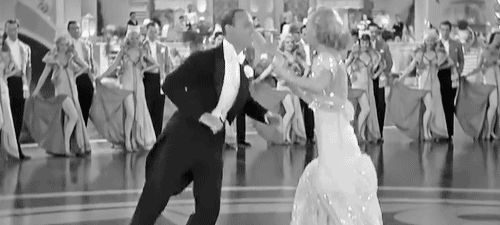
• It wouldn’t have made sense to record the taps, etc live like “I’ll Be Hard to Handle” in Roberta but I wonder what might’ve been picked if they had. Aside from when they clap and there’s no sound, Astaire says something to her when they’re dancing in a circle facing each other. She definitely seems to be giggling at several points.
• When the music kicks up and they go into an energetic section, he bows and flourishes his hand to her, once again making her the main focus.
• While filming the final scene of the movie, Sandrich (the director) wanted the duo to do a short ending dance and he told them this on the day of filming. Astaire and Rogers were peeved. Every bit of dancing, no matter how small, was always rehearsed. But Sandrich, who, again, was a dick, insisted. According to Rogers, she privately told Astaire to simply move her about however he wanted and she would follow along. In all likelihood, they probably did whip up this little dance and rehearse it quickly but you’d never know it wasn’t planned ahead of time.
She obviously had a lot of trust in his ability to lead them both but she also knew he was an excellent social dancer, meaning he didn’t necessarily need a pre-rehearsed routine. And she knew this because they’d gone dancing back in New York when they were dating.
• Here’s a cool behind the scenes picture from The Academy’s archive taken during the final scene.
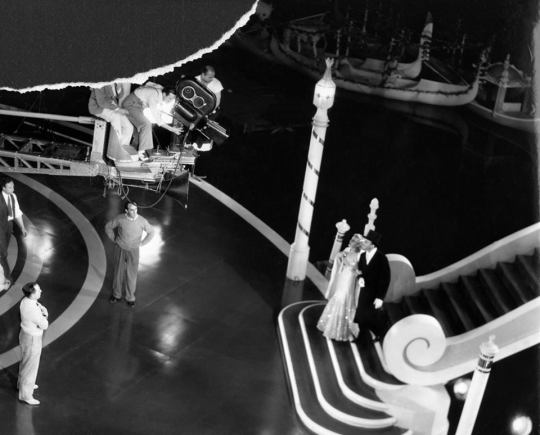
• And so we’ve finished Top Hat, another glamorous adventure for Astaire and Rogers. Up is a more working class outing: Follow the Fleet.
#fred astaire#ginger rogers#top hat#classic hollywood#old hollywood#astaire and rogers rewatch#fred and ginger#any gifs without credit are mine#bc sometimes i just need a specific gif#and no one else has done it or i can't find it#so you're welcome to the three people reading these posts
16 notes
·
View notes
Text
7 MUSICALES PARA VER ANTES O DESPUÉS DE "LA LA LAND" Y COMPLEMENTAR LA EXPERIENCIA CINEMATOGRÁFICA.
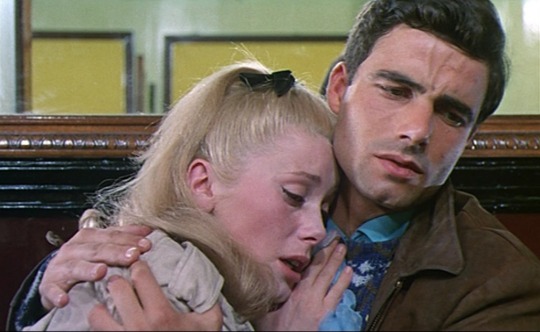
#1 LOS PARAGUAS DE CHERBURGO Les Parapluies de Cherbourg | 1964 | Dir. Jacques Demy Formalmente muy diferente al trabajo de su colegas de la Nouvelle Vague, Jacques Demy experimentaba a mediados de la década de los 60s con el género musical con composiciones de Michel Legrand, y abordando temas como el destino y el amor truncado nos regaló este sensacional y revolucionario filme de culto ganador de la Palma de Oro y nominado como Mejor Película Extranjera en los premios Oscar y Golden Globes. Rozando peligrosamente la cursilería y presentada en tres capítulos -la partida, la ausencia y el regreso-, "Les Parapluies de Cherbourg" nos adentra en la intensa y agridulce historia de amor de Geneviève Emery (Catherine Deneuve), una joven que ayuda a su madre en su tienda de paraguas en Cherburgo y que está perdidamente enamorada de Guy Foucher (Nino Castelnuovo), un joven mecánico con el que piensa contraer matrimonio a pesar de la oposición de su progenitora, quien considera al chico demasiado pobre, y a su hija, demasiado joven: además, las cosas se complican cuando Guy tiene que abandonar el país para hacer el servicio militar en Argelia durante dos años y Rolando, un rico joyero, se enamora de Geneviève.

#2 CANTANDO BAJO LA LLUVIA Singing In The Rain | 1952 | Dir. Stanley Donen y Gene Kelly Considerado por muchos como el mejor filme musical de la historia del séptimo arte, y poseedora de algunas de las secuencias más maravillosas del cine mundial, "Cantando bajo la lluvia" es una obra cumbre de la era dorada del género musical en Hollywood. La película retrata el cambio del cine silente al cine sonoro desde la perspectiva de quienes se encontraban frente a las cámaras: Don Lockwood (el inigualable Gene Kelly) es un ídolo del cine mudo y, junto con Lina Lamont (Jean Hagen), forman la pareja del momento en el cine silente. Sin embargo, la llegada del cine sonoro sacude la industria cinematográfica y la novedad técnica tiene al público ávido de descubrir la verdadera voz de sus estrellas favoritas; el problema surge cuando Lina Lamont posee una voz para nada atractiva, y además, Don se enamora perdidamente de Kathy Selden (la recientemente fallecida Debbie Reynolds) una prometedora aspirante a actriz.

#3 SOMBRERO DE COPA Top Hat | 1935 | Dir. Mark Sandrich Protagonizada por los astros Fred Astaire y Ginger Rogers, este musical se centra en Jerry Travers (Astaire), un famoso cómico musical estadounidense que, tras llegar a Londres e instalarse en la habitación de Horace Hardwick, productor de su obra, conoce a una bella modelo llamada Dale Termont (Rogers), quien se aloja en el piso de abajo y lo confunde con el productor Hardwick; al enterarse de que está casado, ella le rechaza y acepta la invitación de su jefe, el modisto Alberto Beddini, para viajar a Venecia donde, despechada, aceptará casarse con él. El carisma de la pareja protagónica y el excepcional guión que con astucia configura esta trama de enredos con comentarios sobre el Sueño Americano y la Gran Depresión en medio de sorprendentes números musicales compuestos y escritos por Irving Berlin, hacen de "Top Hat" una cinta indispensable para todos los amantes del cine.
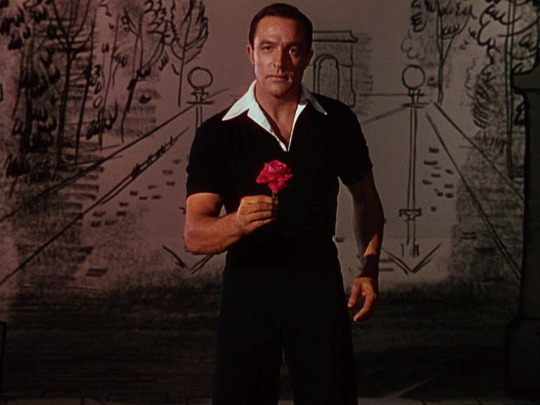
#4 SINFONÍA DE PARÍS An American In Paris | 1951 | Dir. Vincente Minnelli Uno de los expertos en cine musical escribió con imágenes una carta de amor a París y a la vida con una optimista, colorida y romántica historia tan previsible como disfrutable que terminó por llevarse seis premios de la Academia, incluyendo el de Mejor Película. Un fenomenal diseño de arte con inspiración en el arte de Toulouse Lutrec y Rousseau, las sorprendentes composiciones musicales de George Gershwin y unas sensacionales coreografías fueron los ingredientes principales en la fórmula exitosa que dio forma a la historia de Jerry Mulligan (Gene Kelly tan sólo un año antes de filmar la emblemática "Singing in the Rain"), un pintor americano que, tras la Segunda Guerra Mundial, decide establecerse en la capital francesa para probar suerte y exponer sus cuadros en Montparnasse, y aunque tiene poca suerte con la venta de sus obras, conoce a una mujer millonaria que se ofrece a promocionar su trabajo a la vez que conoce y se enamora de una chica que trabaja en una perfumería.

#5 TODOS DICEN QUE TE AMO Everyone says I love you | 1996 | Dir. Woody Allen El eterno inconforme y perpetuamente angustiado Woody Allen nos presenta sus comentarios, políticos, religiosos y sexuales a través de un homenaje al género escapando de los lugares comunes del cine musical y con múltiples referencias a los clásicos del celuloide. En "Todos dicen que te amo" Allen mantiene su esencia formal europea y pone a todo su elenco a cantar -incluso él tiene un particular número musical- para presentar los problemas de una variopinta galería de personajes que encuentran un punto de conexión en el matrimonio neoyorquino formado por Steffi (Goldie Hawn) y Bob (Alan Alda). Esta sensacional película que combina magistralmente la música, el humor y el drama para retratar a esta burguesa familia disfuncional que se pasea no sólo por la Gran Manzana sino también por París y Venecia, y presentada bajo la formalidad melancólica por el cine de oro de Hollywood.

#6 EL CANTANTE DE JAZZ The Jazz Singer | 1927 | Dir. Alan Crosland Jakie Rabinowitz (Al Jolson) es joven judío que ha sido estrictamente educado por su padre para que, a la muerte de éste, sea su reemplazo en la sinagoga del gueto judío donde vive con su familia en la ciudad de Nueva York. Sin embargo, él no está interesado en seguir los pasos de su padre y, por el contrario, se siente fuertemente atraído hacia la música jazz, por lo que decide convertirse en cantante bajo el pseudónimo de Jack Robin, hacia lo cual su padre siente un fuerte rechazo. Se trata, ni más ni menos, que del primer filme sonoro de la historia del cine. Bajo la producción de Warner Bros. Pictures -estudio que entonces atravesaba fuertes problemas económicos-, esta adaptación al cine del exitoso musical de Broadway original de Samson Raphaelson se logró al alternar secuencias con escenas con voz y música sincronizada con las interpretaciones de Al Jolson y con los subtítulos clásicos del cine silente. "The Jazz Singer" se convirtió en un éxito de taquilla, y es que más allá de la anécdota que supone su lugar en la historia del séptimo arte -y pese a quienes señalan que posee una trama elemental o acusan que hace "trampa" al montar las grabaciones de las voces y las canciones con la imagen-, se trata de un filme con una calidad artística propia y cualidades narrativas e interpretativas de primer nivel que la colocan como una sobresaliente producción del cine clásico.

#7 GUY AND MADELINE ON A PARK BENCH 2009 | Dir. Damien Chazelle Escrita, fotografiada y dirigida por Chazelle, esta ópera prima de espíritu artesanal, es un musical monocromático que presenta el encuentro fortuito y el enamoramiento instantáneo que surge entre Guy y Madeline, en gran parte por el amor a la música que ambos profesan (particularmente al jazz). Sin embargo, la separación se presenta muy pronto y la película se enfoca en la manera en la que ambos intentan superar el fin de la relación y continuar con sus vidas por separado, aunque el destino tenga otros planes.
*** Encuentra muchos más títulos de "Cine Musical" en nuestro especial dedicado a este fantástico género ► http://bit.ly/2jpJHyJ ***
#La la land#an american in paris#guy and madeline on a park bench#the jazz singer#everyone says i love you#top hat#singing in the rain#les parapluies de cherbourg#cine musical#recomendaciones
2 notes
·
View notes
Photo

TOP HAT Upstairs at the Gatehouse, Highgate, until 28 January 2018 ‘… rich with romance, dazzle and wit’ ★★★★★ Irving Berlin’s musical is brought to us through the lens of RKO’s motion picture starring Fred Astaire and Ginger Rogers. Based on this film and its book by Matthew White & Howard Jacques, it has lost none of its dazzle and wit. For those of us who find it hard to relate to monochrome and the film’s constant stream of gags, this live theatre version comes off better. It tells the story of a Broadway sensation, Jerry Travers who falls for society girl Dale Tremont. As he pursues her across Europe to London, he become the victim of mistaken identity. It is a show rich in romance and full of hilarious characters. Whilst Astaire and Rogers can never be surpassed for style and quality, they are surely matched by Joshua Lay and Joanne Clifton in the roles of Jerry Travers and Dale Tremont. Right from the opening number when Lay faultlessly catches his cane in mid-air, the choreography (by Chris Whittaker) is going to be something special. Together and with the ensemble they regularly bring the house down, especially in the number ‘Top Hat, White Tie and Tails’. Beautiful sound, exceptional choreography and wonderful dance skills from all. Added to this Joanne Clifton has star quality. She’s a fine actress with an extremely expressive face, has a good quality voice and of course, she can dance. Whilst her Strictly fame does not do her talent full justice, it is wonderful to see her live. The curve of her back, the light quality to her movements and her luminous smile all add up to a fairy-tale loveliness, no doubt aided by costume and hair dressing. The design for this show is exceptional, particularly Clifton’s white dress, with feather boa, which floats with wispy airiness, complimented with an elaborate hairstyle probably a wig or hair piece (designed by Jessica Plews). The raft of characters in the show adds interest and much humour. Perhaps one or two of the ‘gags’ fall flat but overall they are brought to life and hit their mark over and over again. The hilarity factor rises to heights way beyond five stars, when Matthew James Willis as Alberto Beddini gives his rendition of ‘Latins Know How’. Rather less over the top, Darren Benedict as Horace Hardwick, is wonderful to watch in his role as Jerry Travers’ concerned producer and fall guy to his wife. Madge Hardwick is finely played with both frostiness and warmth by Ellen Verenieks. Overall, huge congratulations to director John Plews, whose long career in theatre (much of it on cruise lines Princess, Cunard and P&O) has fully paid off in this production. His experience really shows. Finally, a word about the band led by musical director Charlie Ingles with orchestrations and arrangements by Dan Glover. What a wonderful sound they make, complementing the many outstanding numbers in the show. Get a ticket if you can, it’s deservedly selling very well! Photography: Darren Bell Box Office: http://www.upstairsatthegatehouse.com/top-hat TOP HAT 13 December 2017 – 28 January 2018 Presented by Ovation Upstairs at the Gatehouse, Highgate, Music & Lyrics by Irving Berlin Based on RKO’s Motion Picture Book by Matthew White & Howard Jacques Presented by arrangement with R&H Theatricals Europe Reviewer Heather Jeffery is founder and editor of London Pub Theatres magazine www.londonpubtheatre.com (email for press releases: [email protected]) Formerly playwright and Artistic Director of Changing Spaces Theatre. Her credits include productions at Drayton Arms Theatre (Kensington), Old Red Lion Theatre (Islington), VAULT festival (Waterloo), St Paul’s Church (Covent Garden), Cockpit Theatre (Marylebone) and Midlands Arts Centre (Birmingham)
0 notes
Text
Top Hat: Astaire and Rogers have dancing down pat
youtube
Top Hat was released in 1935. The film was directed by Mark Sandrich, with songs written by Irving Berlin. This is the fourth and most well-known movie where Ginger Rogers and Fred Astaire star together.
Fred Astaire’s movies differed from Busby Berkeley’s. Rather than having constantly changing camera shots, Astaire preferred to keep the camera steady in order to showcase the choreography. Also, rather than Berkeley’s dance numbers which had nothing to do with the plot of the film, Astaire’s numbers were always there to move the plot forward.
In Top Hat, Fred Astaire plays Jerry Travers, an American Broadway star who debuts his show in London, and Ginger Rogers plays Dale Tremont, an American model who wears the designer clothing of Alberto Beddini (Erik Rhodes). They meet in a London hotel after Jerry tapdances on the floor directly above her room while she is trying to sleep. Jerry falls in love with her instantly, follows her to the park, and follows her to Italy after his show. There’s just one problem- Dale thinks that he is Horace Hardwick (Edward Everett Horton), who is married to her best friend Madge (Helen Broderick).
The score was written by Irving Berlin, a famous songwriter behind many standards, including the song “God Bless America.” The success of the film led him to write the score for five more Astaire films.
The typical Fred Astaire film included three numbers: the solo dance, the comedic partnered dance, and the romantic partnered dance. In this particular film, the corresponding numbers were “No Strings (I’m Fancy Free),” “Isn’t This a Lovely Day (To Be Caught in the Rain),” and “Cheek to Cheek.”
youtube
youtube
youtube
The most popular number from the film (and arguably the most popular number ever done by Astaire and Rogers) is “Cheek to Cheek,” where the two dance on a crowded dance floor and eventually venture off alone, effortlessly dancing and showcasing the beautiful Venice hotel (the set was so big that it took up two sound stages and was roughly the size of Grand Central Station).
The ostrich feather dress that Rogers wore in the film was actually designed by Rogers herself. She insisted on wearing it, despite the production team hating it, and Astaire ended up hating it as well, since the feathers flew straight into his face. Eventually, the producers let her wear the dress for the film, but had the costume designer sew the feathers on more tightly (if you look closely, you can see feathers on the dance floor).
Astaire and Rogers continued to make five more films together as a professional duo, until they decided to move on with their solo careers at the end of the 1930s. Top Hat showcases Astaire and Rogers at their best; their chemistry and technical dancing skills continue to be admired by audiences today.
-
Sources:
http://www.filmsite.org/toph.html
http://www.reelclassics.com/Teams/Fred&Ginger/fred&ginger4.htm
http://clothesonfilm.com/ginger-rogers-ostrich-feather-dress-in-top-hat/14378/
http://thefilmspectrum.com/?p=18557
http://brightlightsfilm.com/fred-ginger-hit-highest-peak-top-hat/#
http://themovieprojector.blogspot.com/2011/10/top-hat-1935.html
http://www.tcm.com/this-month/article/133542%7C0/Behind-the-Camera.html
0 notes
Photo




Yes all men. Not all Beddinis.
0 notes
Photo

Ginger Rogers and Fred Astaire in Top Hat (1935).
Ginger’s coat at the end of Top Hat is a perfect example of something that works on an emotional level rather than a narrative level. A coat signifies that the hero can finally take his noble exit, that the lovers are together; it is all very “we gotta get out while we’re young/’cause tramps like us, baby we were born to run!” Even before Dale and Jerry start dancing, the coats signify they are finally together, and I for one get a little thrill as soon as I see them (I also really like coats).
But….make the terrible mistake of actually THINKING about this movie and the coat makes no sense. It is 1) resort season in Venice; 2) Dale was wearing shorts and sheer things a few scenes before; 3) our heroes were dancing in the EXACT SAME PLACE a few minutes ago without their coats; 4) why are they leaving a gorgeous art deco resort? 5) maybe the place is too unpleasant after the emotional trauma of Dale’s fake marriage? 6) that seems unlikely, considering the girl was fake-married to a probably gay man for a couple of hours and the whole thing was imaginary and unconsummated; 7) Jerry does have to get back to his show in London, but the weekend isn’t over; 8) isn’t it the middle of the night? Bad time to catch a water plane; 9) our heroes must be getting pretty hot, considering they are dancing vigorously.
See! The coat makes no sense. But who cares! If there is one movie for us to submit to feelings of joy and delight, it is Top Hat. Enjoy the dance, be happy that our toe-tapping sweethearts have found someone to dance to the strains of the catchy Piccolino, and spend a fruitless hour online trying to find a coat just like this.
#Alberto Beddini#Bernard Newman#Fred Astaire#Ginger Rogers#Mark Sandrich#Top Hat#art deco resort#classic Hollywood#dancing#deco time#fake marriage#happily ever after#victory dance#1930s#The Piccolino#coats
10 notes
·
View notes